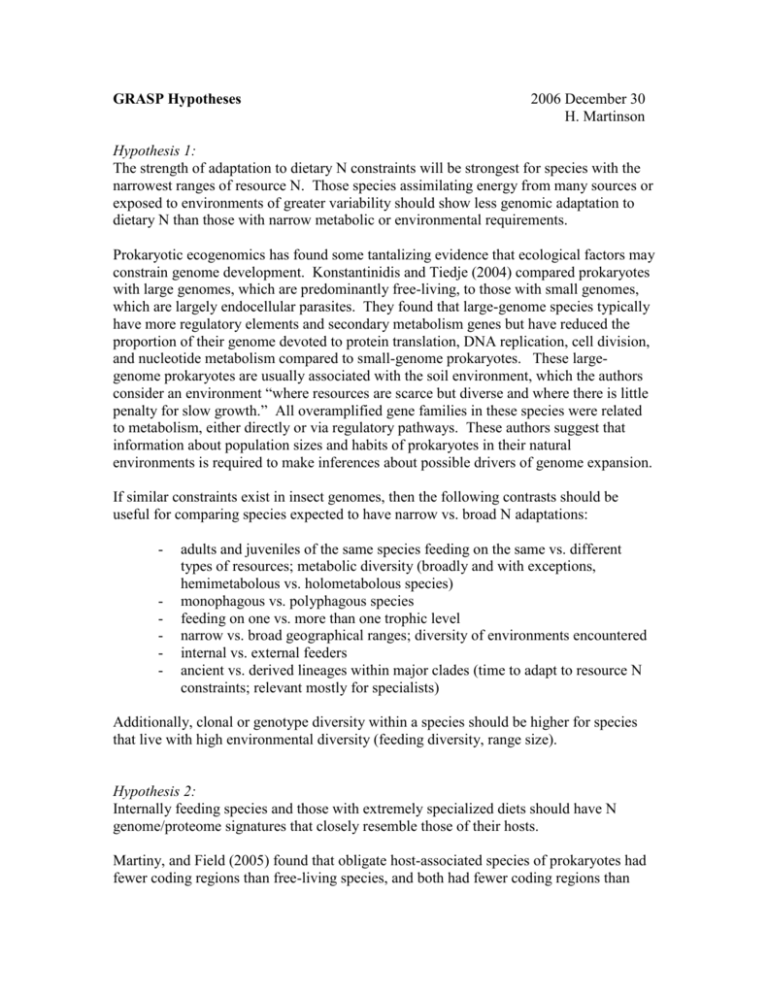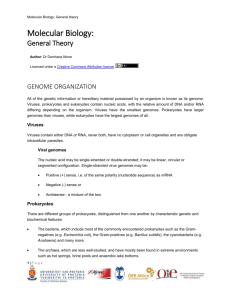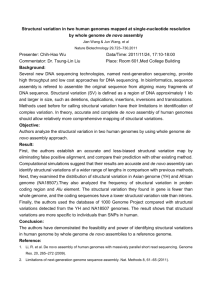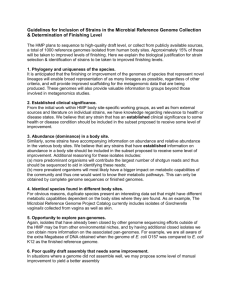Martinson GRASP hypo..
advertisement

GRASP Hypotheses 2006 December 30 H. Martinson Hypothesis 1: The strength of adaptation to dietary N constraints will be strongest for species with the narrowest ranges of resource N. Those species assimilating energy from many sources or exposed to environments of greater variability should show less genomic adaptation to dietary N than those with narrow metabolic or environmental requirements. Prokaryotic ecogenomics has found some tantalizing evidence that ecological factors may constrain genome development. Konstantinidis and Tiedje (2004) compared prokaryotes with large genomes, which are predominantly free-living, to those with small genomes, which are largely endocellular parasites. They found that large-genome species typically have more regulatory elements and secondary metabolism genes but have reduced the proportion of their genome devoted to protein translation, DNA replication, cell division, and nucleotide metabolism compared to small-genome prokaryotes. These largegenome prokaryotes are usually associated with the soil environment, which the authors consider an environment “where resources are scarce but diverse and where there is little penalty for slow growth.” All overamplified gene families in these species were related to metabolism, either directly or via regulatory pathways. These authors suggest that information about population sizes and habits of prokaryotes in their natural environments is required to make inferences about possible drivers of genome expansion. If similar constraints exist in insect genomes, then the following contrasts should be useful for comparing species expected to have narrow vs. broad N adaptations: - - adults and juveniles of the same species feeding on the same vs. different types of resources; metabolic diversity (broadly and with exceptions, hemimetabolous vs. holometabolous species) monophagous vs. polyphagous species feeding on one vs. more than one trophic level narrow vs. broad geographical ranges; diversity of environments encountered internal vs. external feeders ancient vs. derived lineages within major clades (time to adapt to resource N constraints; relevant mostly for specialists) Additionally, clonal or genotype diversity within a species should be higher for species that live with high environmental diversity (feeding diversity, range size). Hypothesis 2: Internally feeding species and those with extremely specialized diets should have N genome/proteome signatures that closely resemble those of their hosts. Martiny, and Field (2005) found that obligate host-associated species of prokaryotes had fewer coding regions than free-living species, and both had fewer coding regions than facultative host-associated species, suggesting that it takes more genes to be both freeliving and host-associated than one or the other. Also, more coding regions were found for extremophiles rather than non-extremophiles for free-living species (although this may be driven by a biased phylogenetic comparison in their study). rRNA copy number was lower for free-living species, which were hypothesized to have slower growth rates than obligate or facultatively host-associated species; the later could be better at using pulses of resources than free-living species. Faster growth was also associated with fewer amino acid and tRNA species, which the authors attributed to a streamlining of the process of growth to do so faster. These authors reviewed evidence that bacterial endosymbionts of insects had low GC content and more deletions than insertions, demonstrating “signatures of host ecology on functional genes.” The most robust pattern they found, though, was an incredibly strong correlation between the GC contents of interacting species (phage-prokaryote pairs), with an R2 = 0.949. This line of evidence suggests that there could be this type of signature for GC content or amino acid usage for intimately interacting pairs of eukaryotes (such as host-parasite/ parasitoid pairs), compared to randomly assemble pairs of similar species. Works Cited: Martiny J. B. H. and D. Field (2005). Ecological perspectives on the sequenced genome collection. Ecology Letters. 8: 1334-1345. Konstantinidis, K. T. and J. M. Tiedje (2004). Trends between gene content and genome size in prokaryotic species with larger genomes. PNAS. 101 (3): 3160-3165. Interesting notes: 1/17/07 Bark and ambrosia beetles (Scolytidae) display a wide range of breeding habits, from parthenogenic reproduction, to sibling mating, to outcrossing. Those that reproduce parthenogenetically have been shown to occupy a greater geographical range, in that they are present on islands that do not support outcrossing species. This is likely do to colonization limitation due to Allee effects in outcrossing spp. Jordal, Beaver, Kirkendall. 2001. Breaking taboos in the tropics: incest promotes colonization by wood-boring beetle. Global Ecology and Biogeography. 10: 345-357.








